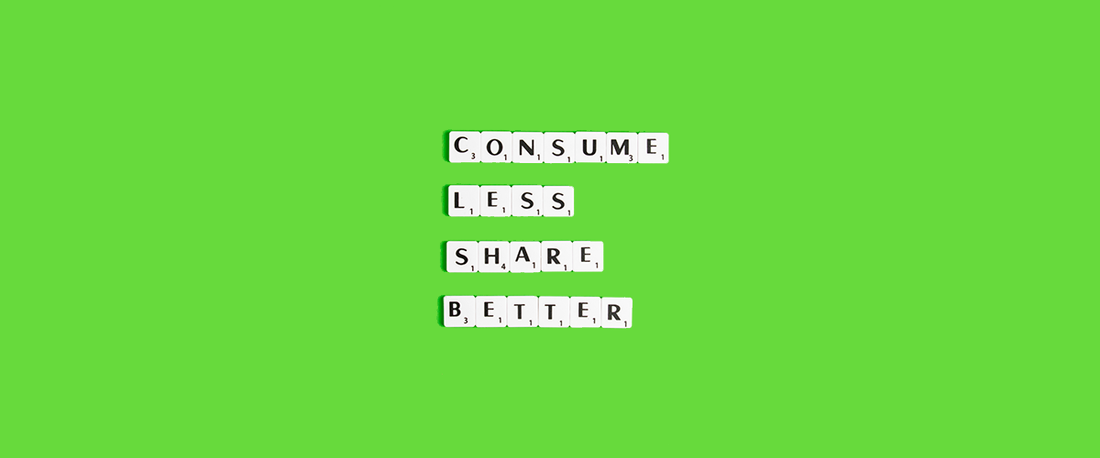
Circular Economy
Our society is living on debt — a debt to the environment and Earth. We are exhausting our resources, not thinking about our future and the future of the next generations. The impact of our economic activities is becoming more apparent each day. Just think of global challenges such as climate change and pollution, or regional difficulties like drought and uncontrollable wildfires on one side of the globe and floods on the other.
Fortunately, many people like you or your customers are waking up and are starting to look at ways to lessen the impact. The movements that promote sustainable practices are on the rise, and each country or city has its own big and small environmental players.
Focusing on sustainability, we can preserve the resources, wildlife, and ecosystems that are still intact and slowly even repair the harm we have already caused. To make a difference, we must all chip in: individuals, businesses, industries, and countries.
Every activity has an impact, and we have a choice. Each action is an opportunity to help. Sustainable living is conquering many households; it is slowly becoming a norm to engage in at least some of the 7 Rs of sustainability: Refuse, Reduce, Repurpose, Reuse, Recycle, Rot, Rethink. As individuals, we can evaluate where we can impact the most and what changes will significantly affect the environment.
For most people, the most significant impact may come from rethinking consumption. We consume too much, and we overuse single-use items. When you can't avoid buying something, choose well what to purchase. Start by selecting a more sustainable item and even better if it's in sustainable packaging!
The economic model that we live in and are used to is the linear economy. It is a constant Extract - Produce - Use - Dispose repetition. The linear economy is damaging the environment on so many levels. We are using up our non-renewable resources like we had 2 or 3 other planets at our disposal. We pollute and degrade the environment during extraction and production, and many practices are far from humane or ethical. We use our items carelessly and toss them when we don't need them anymore. If we continue living like this, we will run out of natural resources, destroy the planet, and worsen global warming. We are slowly but surely digging our graves.
So, how can we change all this? What is the model that will save the planet? It's the circular economy! It is a renewed model of production and consumption, restorative and regenerative by design. There is no waste in nature, and a circular economy aims for the same. Everything is either used or returned to the soil. Everything goes back into the production circle.
Even though it might sound like a new model, this is how our grandparents or great-grandparents lived. They didn't call it a circular economy. It was just the way things were. They went to the market with a woven shopping basket, bought milk in glass bottles, had a few outfits that they used all the time. One of them was the Sunday dress for church, and the others were work clothes. They made many things at home from scratch, not only in the kitchen. They repaired it or took it to a repair shop when something broke. They owned much fewer items that lasted for much longer. Their waste mainly was, if not solely, biological food waste that they took to their home composter in the backyard.
Of course, we can't go back to their way of life. It were different (and in many aspects harder) times. But we, as a society, should rethink and redesign the current unsustainable consumption and production model into new sustainable and modern ways.
The basic principle of the circular economy is to design everything in a way that does not damage the environment at any stage of the lifecycle, and almost nothing should end up in the trash. It promotes the use of renewable and durable materials or materials that can be broken down into harmless substances. Using renewable energy, not polluting the environment with harmful chemicals, promoting only ethical labor practices, designing out any waste.
All of the abovementioned 7Rs of sustainability have their place in the circular economy. But it is essential to mention that recycling should become a last resort, not a go-to strategy. Recycling consumes energy and degrades the materials over time. The method in the circular economy to retain the value of products is to repair, maintain or upgrade, reuse, remanufacture, upcycle, and lastly, recycle.
To shift from a linear to a circular economy, we must break society's focus on consumption and begin to focus on meeting our needs without depleting our resources. The business models will need to change substantially, and it all might look completely different than before. For some industries, the change might be easier to design and implement. Renting rather than owning could be a new norm for vehicles, tools, machines, appliances that we don't use daily, etc. For others, it might mean completely redesigning the product or its packaging.
We also need to remove the planned obsolescence as a business strategy, focusing on quality, durable products that might be more expensive, but instead of buying several items over a while, you would only buy one thing that will last longer. Planned obsolescence is most visible in fash fashion and technological products (new phone model every year).
How do we at Ecotime help to create a circular economy? We offer only compostable, recycled, and recyclable retail and courier bags, creating green alternatives to single-use plastic bags. Our bags are sturdy and reusable. They were designed to last for many uses. If you have one of them, you won't need any other bag for a very long time. Moreover, they should never end up in landfills as they can be recycled or composted.
We want to be a part of the new model. Will you join us too?
